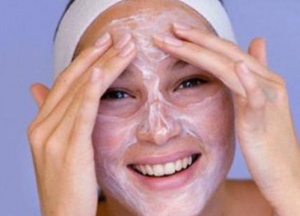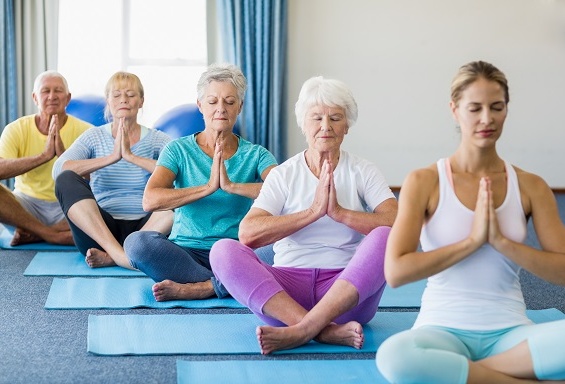Once the gloriously warm and sunny days of late Spring or Summer arrive, slowly we begin to show a little more skin to the rest of the world. First, the tee-shirts and shorts get pulled out of the drawer, followed by sandals. No one wants their skin to be the same color as Swiss cheese – we want to look healthy and vibrant.
Well, it’s wonderful to sport that sun-kissed glow, but here are a few facts that might make you re-think that coveted golden brown skin. For example:
- Did you know that skin cancer is the most common of all cancers and accounts for nearly half of all cancers in the United States?
- More than 3.5 million cases of basal and squamous cell skin cancer are diagnosed in this country each year.
Take heart though, because, unlike other forms of cancer, all skin cancers are highly treatable if found early.
But… seriously why put yourself through the needless worry of melanoma, the most-serious form of skin cancer, or, even the most inconsequential form of skin cancer, when you can take precautions NOW?
For those who have worshipped the sun in the past, perhaps you will remain unscathed by skin cancer, but you may end up with skin as tough as shoe leather?
If the above factoids seemed scary, they are meant to be, but, you needn’t hunker down in the house, and only stray outside under wraps and large sunglasses during the daylight hours. Being proactive about taking precautions when in the sunshine, you can thwart skin cancer and still enjoy the great outdoors. If you have additional questions about how to reduce the risk of skin cancer you should contact a dermatologist in NJ. A New Jersey dermatologist will be able to answer all of your questions about how to keep your skin healthy.
Risk factors
Some people are predisposed to skin cancer, and must take extra precautions to avoid the sun. For these folks, lotion or spray with a sun protection factor, or “SPF” should be applied throughout the day, especially if one is sweating or in the water. SPF 15 product blocks about 94% of UVB rays; an SPF 30 product blocks 97% of UVB rays; and an SPF 45 product blocks about 98% of rays.
For some, rather than fooling with greasy lotions and sprays, it is preferable to don protective hats or clothing which do not permit the ultraviolet (UV) rays to penetrate your skin. Such clothing blocks 98% of the sun’s rays and offers 50+ SPF protection. This is a great option, especially if you need to work outside during the time when the sun is strongest.
People who are predisposed to skin cancer
- Have a pale complexion (especially a natural redhead or blonde) and sunburn easily – even just a few minutes in the searing mid-day sun might turn the skin pink;
- Have family members who have had skin cancers;
- Have multiple or unusual moles;
- Have had severe sunburns in the past;
- Have had unprotected and/or excessive exposure to ultraviolet (UV) radiation at a tanning booth; and
- Have had excessive occupational exposure to the sun by working with coal tar, pitch, creosote, arsenic compounds or radium.
Enjoy the sun
For those in warmer climes, they have the ability to enjoy the sun and warm days most of the year, but for those who live in a four-season state, there is much anticipation about the arrival of warm weather, and Summer, in particular. But, you can feel free to enjoy this wonderful season, but just taking a few precautions like:
Avoid the sun between 10 a.m. and 4 p.m. when its rays are strongest. During these hours, be a shade seeker and practice the “shadow rule”, i.e. if your shadow is shorter than you, then he sun’s rays are at their strongest.
Protect your skin with a cover-up that is made of tightly woven fabric (you should not be able to see through the fabric if holding it up to the light). Don’t forget to protect your ears, nose and the back of your neck, so donning a wide-brimmed hat that shades these sensitive parts is wise; a baseball cap might celebrate your favorite team, but does not protect your ears and neck, so you must use sunscreen on these areas.
Protect your eyes by wearing sunglasses with 99% to 100% UV absorption even on a cloudy or hazy day. This will provide optimal protection for your eyes as well as the surrounding skin.

Sunscreen is your friend but only if it is an SPF of at least 30 or higher. Remember to re-apply it every two hours, and after swimming or sweating. Just because it is hazy or overcast, the sun’s rays can still do damage so use sunscreen. (Winter as well since the snow gives an incredible glare when coupled with the sun.) Don’t forget your lips and use plenty of lip balm to protect your lips from sun damage.
Avoid tanning beds and sun lamps as they are damaging to your skin – as mentioned above, the harmful UV rays not only may cause skin cancer, but even melanoma, the most-serious form of skin cancer. Besides, it will leave your skin as tough and leathery as an old pair of boots.
If you like the sun-kissed look, why not consider a fake-‘em-out tan? The products available today are very natural looking. Bronzers or sunless/self-tanners will give you a temporary look, some which last as long as a few days before they need to be re-applied, and are not believed to be harmful if applied correctly. However, they do not offer sun protection, just a hint of skin color. As to extenders, the only FDA-approved color additive for extenders is dihydroxyacetone (DHA).
You should do a self-examination of your skin at least on a monthly basis, especially if you are a sun worshipper. Report any unusual findings to your doctor or seek out a top dermatologist in New Jersey.



